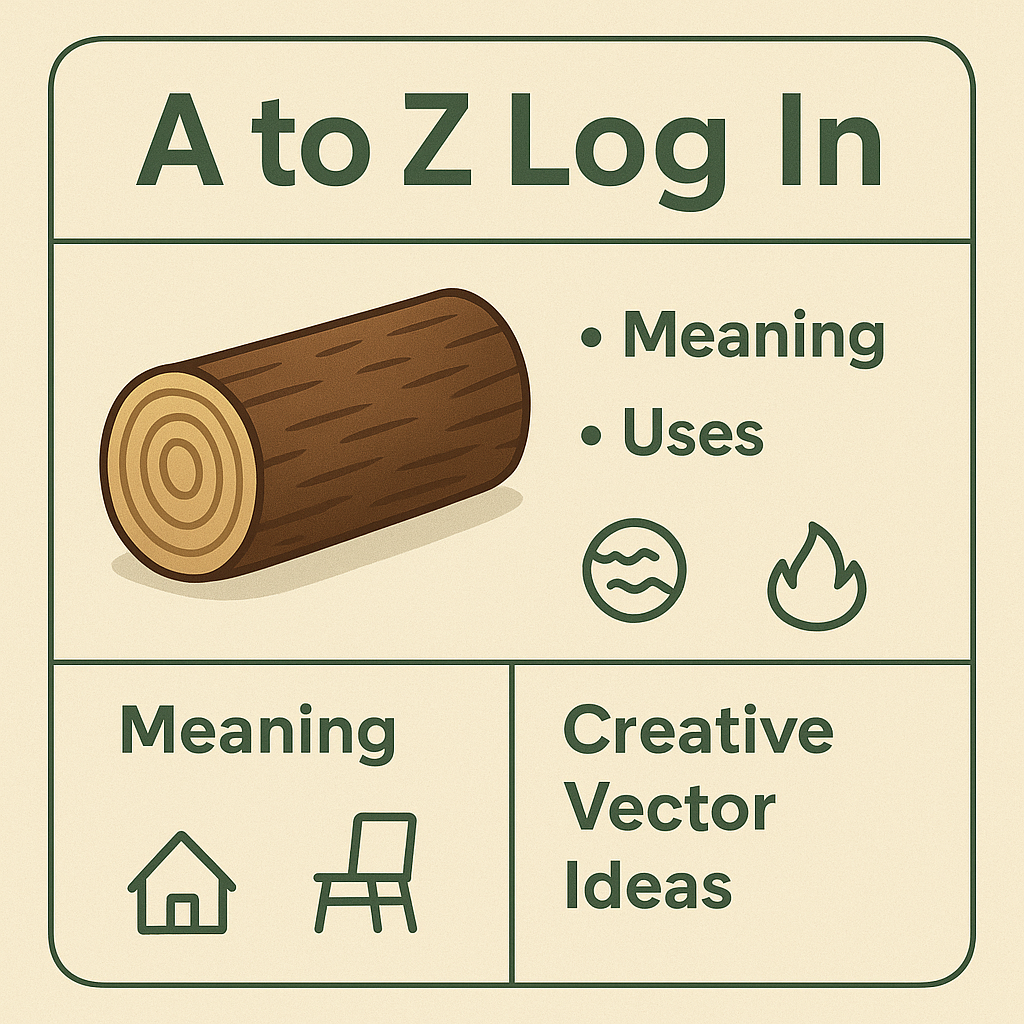Menu

The word “log” might remind you of trees, fireplaces, or even computer systems like “log in” and “log out.” But did you know that logs also play a big role in design and creativity? From rustic home décor to trendy vector illustrations, logs are used in more ways than most people realize.
This article covers everything about logs—from what they are, how they’re used in real life, and how designers use log images and icons in digital artwork. Whether you’re a beginner or a designer looking for ideas, we’ve got you covered from A to Z.
A log is simply a piece of wood cut from a tree trunk. It’s usually round and shows the tree's rings inside. Logs have been used for thousands of years for building, burning, crafting, and even storytelling.
But there’s another meaning too:
The word “log in” is also used when we access a computer or website. That’s where the term “A to Z log in” comes from—understanding every part of logs and their use, from start to finish.
Here are the top ways people use logs in real life:
Logs are burned to give heat in fireplaces, stoves, and campfires.
They come from different types of trees like oak, pine, and birch.
Logs are used to build homes, cabins, and fences.
They’re strong, natural, and good for insulation.
Log slices are made into tables, stools, and wall art.
They bring a warm and rustic look to any room.
Trees are cut into logs, turned into pulp, and then made into paper.
Newspapers, books, and notebooks all come from this process.
Logs are not just physical objects—they’re also popular in design, especially vector graphics. Here's how:
Brands that focus on nature, camping, or eco-products use log icons.
These logos feel natural, simple, and trustworthy.
Logs are used in charts or images to explain topics like tree growth, sustainability, or biology.
Perfect for schools, blogs, or info posts.
A log texture or wood grain can make a website or poster feel warm and earthy.
Vector logs are easy to repeat in designs without losing quality.
Many mobile games use logs in their design, especially survival, farming, or crafting games.
Designers often use 2D or 3D logs to add realism.